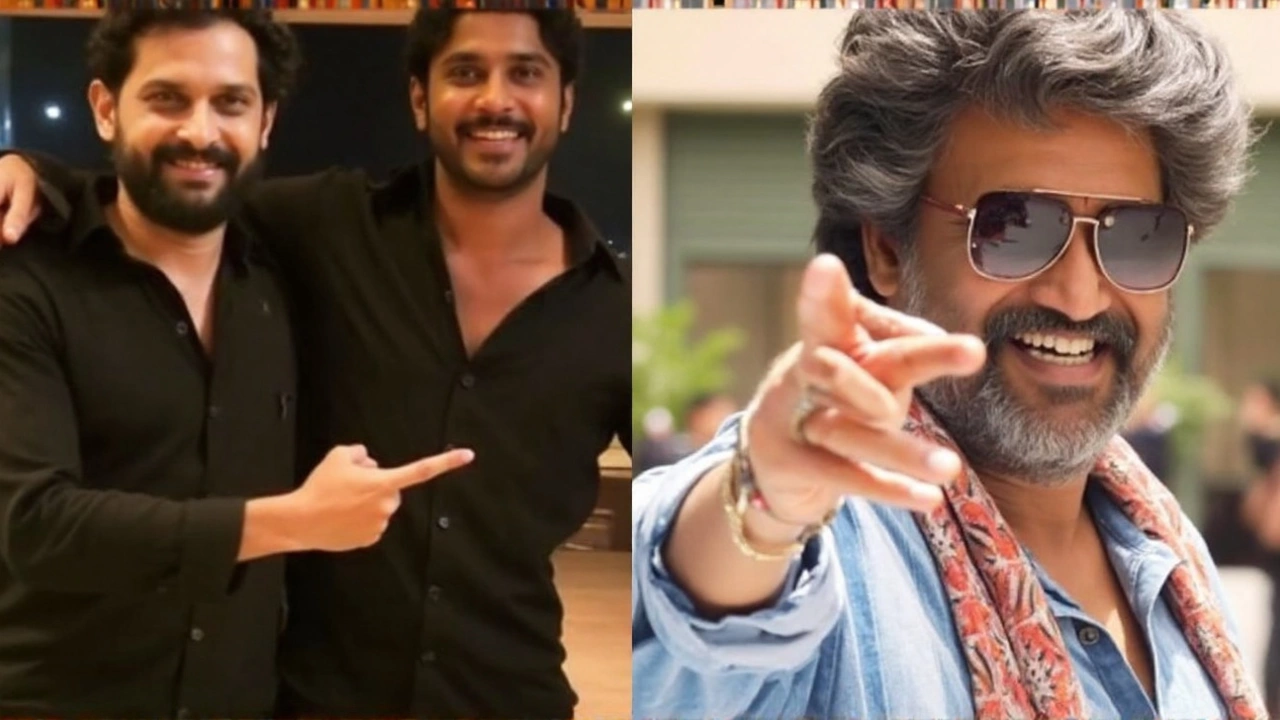On its way to rewriting the Tamil box office in 2025, Coolie has also turned into a family moment in Hyderabad. Akhil Akkineni’s crisp tribute to his father Nagarjuna — 'Simon. Congrats my king.' — summed up what many felt leaving theatres: the veteran star’s villain debut hits hard.
A family salute for a career-first turn
The spark was a simple Instagram post: Akhil, in all black with Nagarjuna by his side, both smiling next to a custom cake shaped like Simon Xavier — the menacing port kingpin his father plays in the film. No long caption, no elaborate hashtags. Just a name and a salute. It spread fast. Fans shared it across platforms, calling it a proud moment for the Akkineni clan and a fresh chapter for Nagarjuna.
The family presence didn’t end there. Elder son Naga Chaitanya made time to catch a show at AMB Cinemas in Hyderabad, keeping it casual in a shirt and jeans. Before stepping in, he posted the film’s poster with '#coolie today for my #king.' Inside the packed hall, he watched what fans have been cheering for days — Rajinikanth in full mass-hero mode, and Nagarjuna stepping into darkness with relish.
That shift matters. Nagarjuna, a leading man for decades in Telugu cinema, has flirted with grey shades before. But this is his first full-fledged antagonist in Tamil, and it’s not a timid entry. As Simon, he runs an illegal network from a bustling Visakhapatnam port, flanked by his trusted aide Dayal, played by Soubin Shahir. The character is cold, composed, and theatrical when needed — a neat contrast to the hero’s raw fire.
Directed by Lokesh Kanagaraj for Sun Pictures, Coolie rides on smart casting. Rajinikanth plays Devaraj ‘Deva,’ a former coolie union leader pulled back into the grind after the mysterious death of his friend Rajasekhar. That death sets the plot in motion, drawing Deva into a syndicate’s maze and right up against Simon’s empire. It’s a straightforward setup with room for stylish detours — chases through container yards, shadowy meetings on the docks, and a final stretch that critics say lands with heft.
The ensemble helps. Alongside Rajinikanth, Nagarjuna, and Soubin Shahir, the film features Upendra, Shruti Haasan, Sathyaraj, and Rachita Ram in key parts. Special appearances by Aamir Khan and Pooja Hegde add sizzle without hijacking the narrative. Reviewers flagged the second half as the strongest piece, praising the way cameos are used to lift stakes rather than pad runtime.
If you’ve watched Lokesh’s earlier work, you can track his fingerprints — lean scene design, moment-to-moment tension, and big payoffs tucked into crowd-pleasing set pieces. Here, he gives Rajinikanth the space for nostalgia and swagger, while letting Nagarjuna own the menace. The two collide in a way that feels engineered for first-day-first-show whistles and repeat viewings.
Box office muscle, reviews, and what it means
Coolie released on August 14, 2025 — the Independence Day frame that Tamil producers circle months in advance. The timing worked. The film sprinted out of the gate and then kept going, turning into the highest-grossing Tamil film of 2025 and the third highest-grossing Indian film of the year. It has already climbed to fourth on the all-time Tamil list, which is no small feat given the competition from recent mega-hits.
The theatrical momentum got a clean second wind after its streaming debut. Amazon Prime Video picked up post-theatrical rights for ₹110 crore and rolled the film out on September 11 in Tamil, with dubbed versions in Telugu, Malayalam, and Kannada. That move widened the audience base, pulled in holdouts who missed the cinema run, and sparked fresh chatter online around Nagarjuna’s performance and the late-film reveals.
Critics landed in the mixed-to-positive band. The broad read: the second half hits a higher gear, Lokesh’s staging shines, and the cameos are used smartly. The soundtrack and background score pump the energy without drowning out the drama. On the other side, some felt the first hour plays it safe. But even those reviews circled back to the same conclusion — when the film locks in, it’s thunderous, and Rajinikanth’s big-screen charisma is the engine.
Where does Nagarjuna fit into that picture? Squarely at the center of the film’s conversation. Viewers praised the measured body language, clipped dialogue delivery, and the way he underplays menace until the script demands a burst of power. It’s not just a stunt casting; it’s a part that leans on his calm star aura and lets it turn cold. That’s why the Akhil post resonated — it wasn’t just a son cheering a father, it was a nod to a reinvention that worked.
Cross-industry casting has become a South cinema staple, but this one stands out. A Telugu icon anchoring a Tamil villain at this scale signals a trend that’s here to stay: senior leading men stepping into antagonists to shake off typecasting and add weight to event films. The payoff is clear on screen. When a hero with decades of goodwill faces off against a rival with the same kind of aura, every face-off feels like a main event.
The production muscle shows too. Sun Pictures knows how to stage a festival film — big frames, high-gloss set pieces, and a clean pipeline from theatre to streaming. The port setting gives the action a visual identity, and the costume design sticks — especially the black-on-black looks that fans have started to mimic in fan art and theatre celebrations.
The audience response hasn’t stayed limited to metros. Reports from single screens and tier-2 cities point to packed evening shows weeks into the run, helped by word of mouth that the film gets better as it goes. Overseas, the film’s draw among Tamil and Telugu-speaking audiences added steady weekends, especially once the talk around Nagarjuna’s character spread.
On social media, the highlight reels are easy to spot: entrances, stare-downs, and the late-act reveal that critics avoid spoiling but clearly enjoyed. Fan edits split the film into ‘Deva moments’ and ‘Simon moments,’ a sign that the two-star structure connected. The Akkineni family posts, layered on top, gave the celebration a personal edge and kept the film trending beyond the usual review cycle.
For Rajinikanth, Coolie reads like a statement about longevity. The film leans into his legacy without turning into a museum tour — the staging is modern, the rhythm is brisk, and the jokes land without winking too hard at the past. For Nagarjuna, it’s a flex: a late-career switch that looks natural, opens doors in Tamil, and could set up a run of layered antagonists or anti-heroes if he chooses.
And for Lokesh Kanagaraj, it’s another reminder that he can build an event film around scale and character at the same time. The second-half momentum and the careful placement of cameos show a director who understands crowd timing — when to raise stakes, when to hold back, and when to give fans the payoff they came for.
As awards season talk warms up later this year, expect conversations around star performances, stunt design, and score. For now, though, the milestone is simpler. A holiday release turned into a genuine box office juggernaut, a streaming-friendly repeat watch, and a family moment that cut across fanbases — all with a cake shaped like a movie villain sitting quietly in the middle of it.

